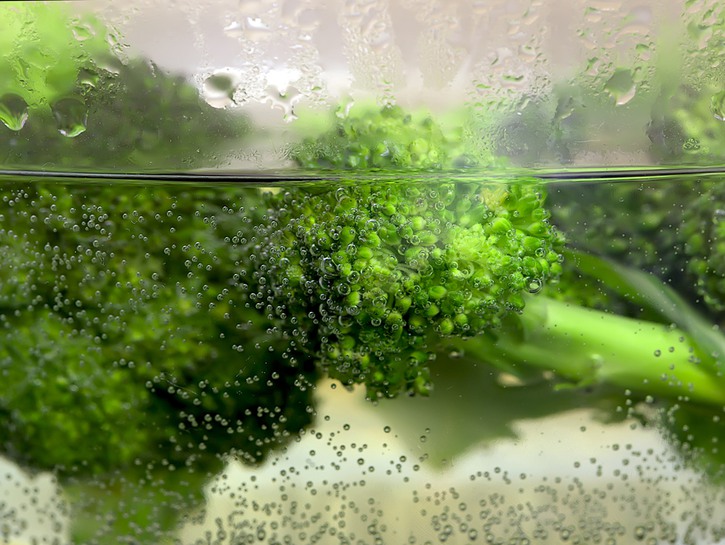What Is Blanching?
Blanching may seem like an intimidating cooking technique to those who have never done it. However, it is actually quite easy and can come in handy when preparing fruits and vegetables. To put it simply, blanching is the act of boiling an item for a certain amount of time then immediately cooling it off in a bowl of ice water.
Boiling and then immediately cooling foods may seem a little unnecessary, but blanching fruits and vegetables actually useful for number a reasons including:
- loosening skins for peeling foods like peaches and tomatoes
- retaining the color of brightly colored vegetables
- neutralizing the bitterness in hearty greens like kale and Brussels sprouts
- preparing fruits and vegetables to be frozen
- parboiling foods
Blanching VS Parboiling Vs Steaming
Blanching, parboiling, and steaming are all similar techniques, however they do have different functions. Blanching starts off by partially boiling a fruit or vegetable, just like parboiling. The key difference between these two methods is that parboiling does not always require an ice water soak like blanching does. Like blanching, steaming is a cooking technique that uses boiling water to cook foods.
When you steam vegetables, the food is not in direct contact with the boiling water like it when blanching or parboiling. Instead, it the food is separated by a steamer which allows the steam from the boiling water to cook the food. When you steam food, the final product is tender and moist.

How To Blanch Fruits And Vegetables
Blanching fruits and vegetables is incredibly simple and can be accomplished in just a few steps. Before you get started, you will need a pot that is large enough to fit all of your fruits or vegetables. You will also need large bowl of ice water and a slotted spoon or tongs to transfer the food items from the boiling water to the ice water. If you need to make multiple batches of blanched veggies, make sure you have enough room to store all of your finished foods as well as enough ice water because it may melt in between batches.
- The first thing you need to do is bring a pot of water to a boil. For most foods, you will want to add salt to the water to maximize the flavor of your foods and keep green vegetables brightly colored. However, if peaches or tomatoes are being blanched, do not add anything to the water.
- Get a large bowl of ice water (sometimes referred to as an ice bath) and a slotted spoon ready.
- Prepare, rinse, and chop your vegetables as needed while the water is coming to a boil. Prepping the vegetables right before boil helps prevent oxidation.
- Once the water is boiling, put the items in the pot for the amount of time as called for in your recipe. Usually this will be between 30 seconds and two minutes. To test for doneness, remove one vegetable, shock it in the ice water, and taste.
- When the items are done, quickly lift them from boiling water and transfer them to the ice water bowl with a slotted spoon or tongs. Stir them around to stop the cooking process. This step may be referred to as “shocking.”
- Once the vegetables are completely cool, drain and pat them dry.

Foods To Blanch
Blanching is a great way to preserving frozen fruits and vegetables because it helps cleanse the items of dirt and slows the loss of vitamins and minerals. Here are some foods that may require blanching:
Vegetables
- Carrots
- Green Beans
- Broccoli
- Cauliflower
- Asparagus
- Brussels Sprouts
- Tomatoes
Fruits
- Peaches
- Almonds
- Strawberries
- Apples
- Pears
